THE HOOFBEAT
PETITO’S 40TH YEAR
Page #19
Coach Petito’s career in MN football.
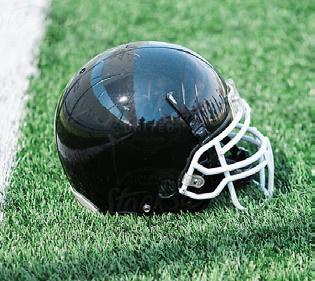

PETITO’S 40TH YEAR
Page #19
Coach Petito’s career in MN football.

Millard North cheer is taking structural changes head-on





Pages 2-3
SEASONAL SPICE

Page #17
Fall drink reviews of local coffee shops.
n the sidelines of every football and basketball game are our perpetrators of pep - the cheerleaders. With a focus on the crowd’s enjoyment and entertainment, their chants and routines are practiced for weeks before every season.
Unlike years past, though, the cheer program has taken on a new form this year - a structural separation. With cheerleaders busy preparing to put on their game faces, a new distinction has been made to separate our sideline-cheering and performance-ready cheerleaders.
Throwing out past varsity and junior varsity teams, the modern cheer program has created sideline and competition teams. With emphasis on chants, entertainment, and crowd engagement for sideline members, cheerleaders on the competition team can focus on their routines and choreography for their involvement in the All-Girl Traditional Division competition.
Standing out from the past varsity and junior-varsity labels put on the cheer team, the two new teams allow for the integration of all cheerleaders, from freshmen to seniors.
Senior Sarah Allen has noticed these differences in cheerleader-to-cheerleader communication.
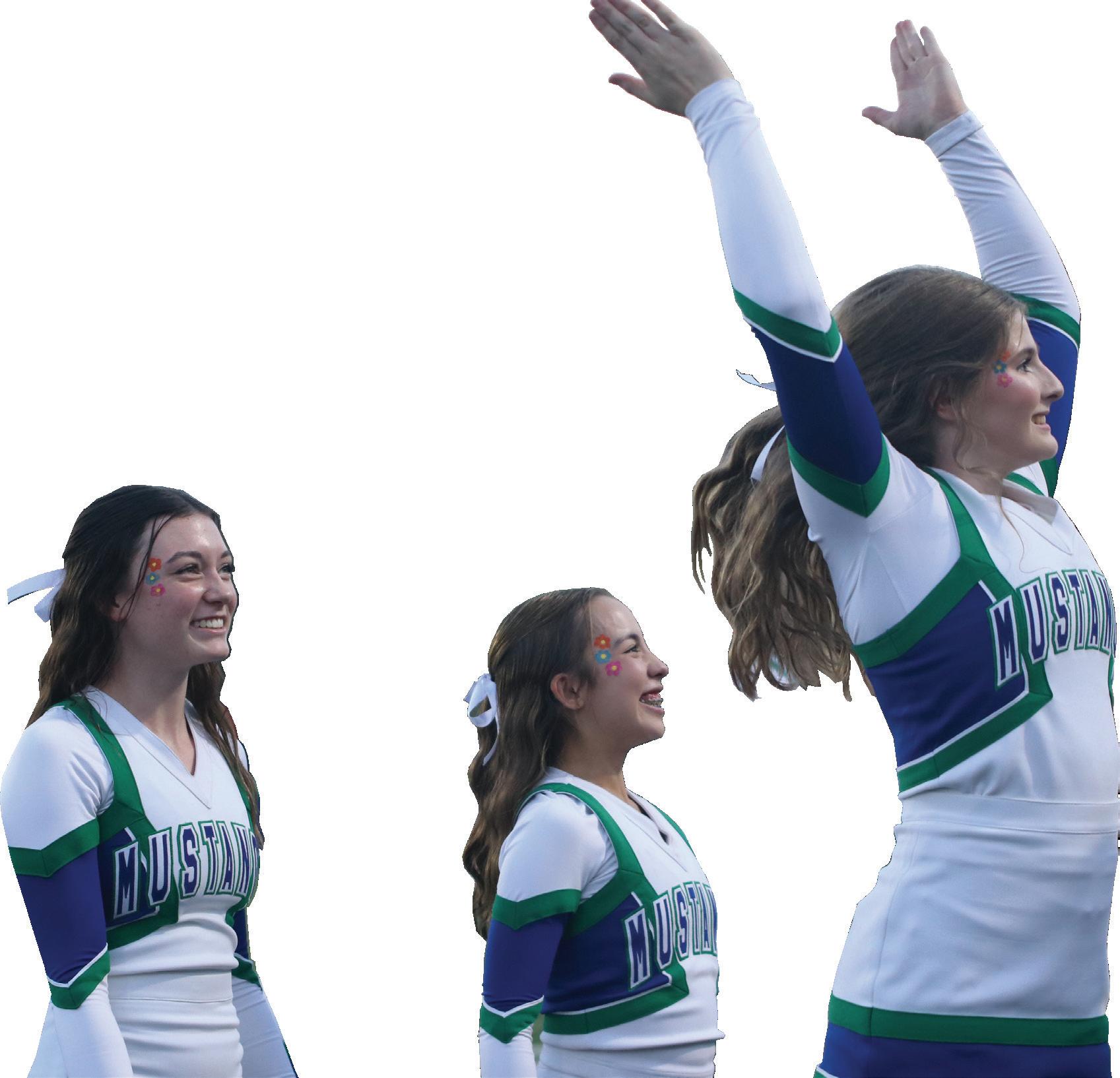
“Girls newer to the sport and more experienced girls can work together and teach each other the new skills we are learning, es pecially with our new stunting additions,” Allen said.
Aside from communicative changes, though, Allen, who takes part in both side line and performance cheering, has noticed many changes in her routines and schedules.
“With a new coach, we are now a stunting team. For practices, we switch around and work together to see what positions work best,” Allen said.
Emphasizing the importance of the new separation, though, is Allen’s
Sideline Smiles:
The team is all smiles as the night is coming to a close for MN’s Hawaiian-themed football game. Cheerleaders Jaida Thorson, Adilyn Allerheiligen, and Ava Reisbig cheer in formation after a night of stunting and chanting.
Photograph by Kai Pavlova
difficult dilemma. As a part of both performance and sideline cheer, there’s a lot to take in.
“Being a part of all of the [different routines] means that I have to learn our new routines, as well as this year’s new cheers and chants, all while practicing for the performance side of cheer,” Allen said. “[The separation] can give people a better option because the two routines are very different.”
Head Cheer Coach Connor Churchill, who implemented the stunting routines of this year’s cheerleading team, created this separation between performance and sideline cheerleading to resemble college routines and programs.
In the past, Millard North had not included stunting in its performances, and in an effort to better prepare his cheerleaders for college-level cheer, Churchill has set his sights on a new skillset.
“We have implemented a program geared more towards collegiate style cheer to develop all athletes in the program to be ready to cheer
chill. “With the girls competing in a division with stunting and tumbling the type of training has changed.”
In yet another new distinction made for the sidelines, Sophomore Marissa Anderson is taking on a new role for the cheer program.
“I was a cheerleader last year, but this year I applied to be the mascot for our team,” Anderson said. “I’ll do everything our cheerleaders do, but in a costume.”
The last time Millard North’s cheerleading team had this much pep was over five years ago when our mascot duo took to the sidelines to rile up the crowds.
“Our past mascots had gone to camps to train, and I’ll either do the same or work one-on-one with a coach for my routine,” Anderson said. “They did a great job, so there’s definitely some [shoes to fill].”
Our past mascots found themselves working closely with cheerleaders, football players, and, of course, the crowds to make an incredible atmosphere for entertainment and enjoyment.
Although the timeframe is unsure for our new mascot, students can plan to see and interact with their mascot by the time our basketball season comes to life. With plans underway for performance training, game-ready, and even costume-wearing cheerleaders to wear the colors of Millard North, the cheer team is well on its way to expanding its influence and is already pumping up the energy at Millard North’s football games.
“We are creating a culture built on confidence. My goal is to develop athletes to cheer at the next level.
CONNOR CHURCHILL Head Cheer Coach
The cheer program is oriented towards teaching and preparing its members for college-level competition and cheering. With rankings no longer based on Varsity or Junior Varsity, the cheer team puts out cheerleaders based on their performances at practice. The competition-level cheerleaders work on seperate routines from the game-ready cheerleaders in the program.
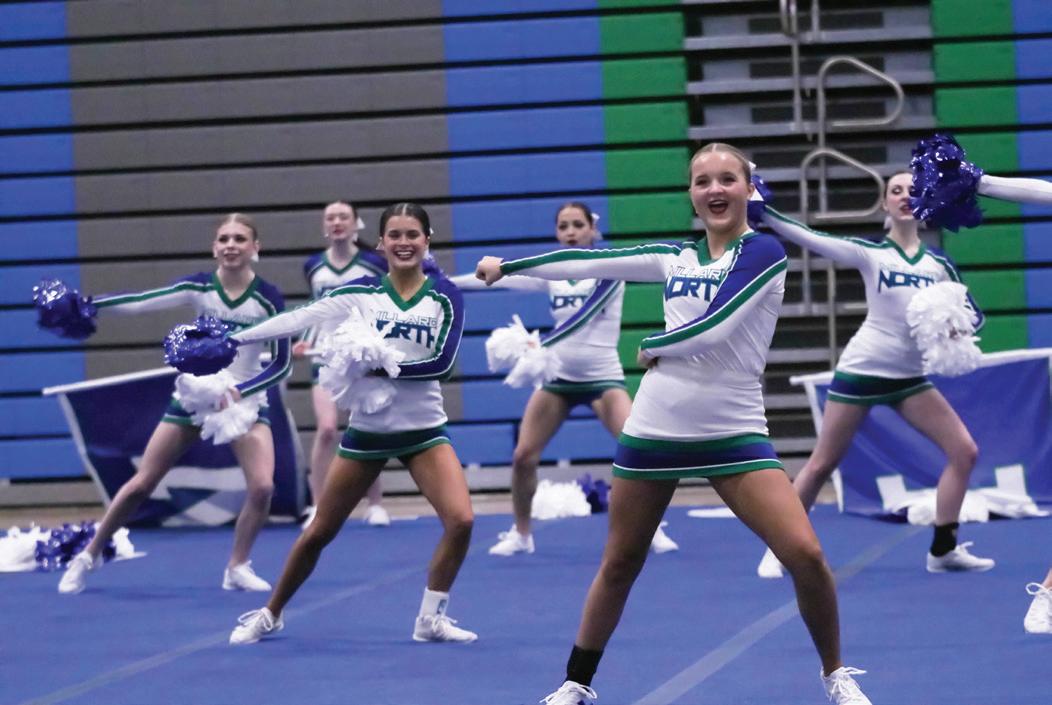
Since the beginning of Millard North’s cheer program and still going strong, one of the teams most exciting displays has been its well-practiced and crowd-engaging chants.
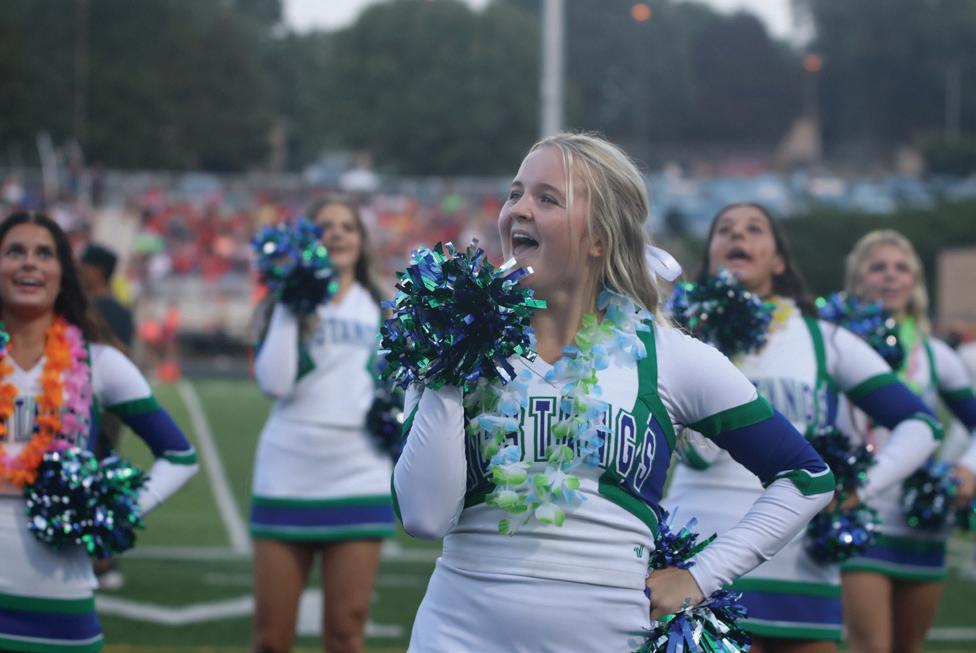

In contrast to years past in which Millard North’s cheerleaders have remained grounded, Coach Connor Churchill’s new routines have cheerleaders sky-high.

In lieu of changes to the entire structure of the cheer program, Coach Connor Churchill has separated competition and sideline cheer, with different practices and routines for both.
A mascot is on the horizon for Millard North’s future. Although we know of its coming, we have yet to hear anything about its design or to see its concept art, and so for now, the mascot is a mystery.

encils, notebooks, and laptops are scattered around tables as students are hard at work. Quiet chatter drifts throughout the cozy space. The library has always been a haven for students to study, conversate, and of course, check out books, but this year, the person behind the front desk is different.
Rebecca Terrell has taken the position as the new librarian this school year, introducing a new library system.
Terrell has always held an important role for students. Prior to being a librarian, she was an English teacher for 15 years. A goal of hers was always moving into the library position, but it was unclear when the job would become available.
Last year, Terrell left to take the library position at Skutt Catholic High School but returned once the job opened up at MN.
“I am very happy that they took me back because there were a lot of good applicants, so I am very fortunate,” Terrell said.

With every new job, there is an ample share of great new experiences, but also tough, unfamiliar challenges. For Terrell, being head librarian has definitely proven to be a learning experience.
“There is a learning curve to stuff when you try something new. I’m not super great at technology which has been a little stressful for me,” Terrell said.
Working in the library is a privilege Terrell doesn’t take for granted. She holds a deep passion for reading and is extremely grateful she gets to help students to find a passion for it as well.
“I think reading is super important, so I like helping kids find a book that they like and seeing the excitement it brings them,” Terrell said.
Being a librarian is a heavy job that Terrell can’t man alone. Paraprofessional and library helper Deborah Noah has appreciated having Terrell around this school year.

“She has been such a blessing to have and very sweet. She’s so dedicated to all the students, and I just love working with her,” Noah said.
Along with a new librarian, there have been other adjustments to the library system this 2023-2024 school year. Several rules have been put in place to help the flow of the library. One of these includes a new iPad station at the main entrance of the library--used by students to sign in and out.
“We have kids sign in here because we’ve got a lot of kids coming in without E-Hall passes. This way we have a list of everybody who is in here in case an emergency happens,” Terrell said.
Another latest rule put in place is not being allowed to use the back door. This has affected many students during night library as they use it to exit the building.
“We made that call for safety purposes, because you can’t open the door from the outside and we just feel that when people keep coming in and out, it is a safety precaution,” Terrell said.
In addition to this, new top displays and author spotlight have caught the eyes of many students. These add to the friendly atmosphere and essentially bring an academic aura to the space.
Library volunteers sophomore Marley Marrs and senior Joshua Liptrott also contribute to the library, making it a warm and inviting place.
Librarian
RebeccaTerrell directs freshman Damien Angello to a must-read. One of Terrell’s favorite parts of her job is helping students when searching for a recommendable title.

“We’ve set up new top displays and an author spotlight which are changed depending on the season. We have a really well thought out idea for October that we are excited to put up, and the decorations with it,” Marrs said.
As for future developments, Terrell has been brainstorming several ideas to improve the flow of the library. This includes categorizing the fiction books to improve the experience of book browsing.

“I want to genrefy the fiction, which means all the horror books are together and all the science fiction are together. We have already done it with the nonfiction and now I would like to do it with the fiction,” Terrell said.
With all these new changes, the library is sure to become even more of a welcoming space for students to become stronger academically and socialize quietly. The library has always held a special spot in the school structure and will continue to hold such significance for years to come, especially with Terrell at the wheel.
Library Hours
Monday: 8:15 - 4:30
Tuesday-Friday: 7:30 - 4:30
• Up to five books can be checked out at a time
• Books are checked out for three weeks
• The checkout can be renewed once, for another three weeks
News Editor
ou’ve had a bad day. It feels like everything possible has gone wrong. You forgot your laptop at home, woke up late, and your hair’s been frizzy all day. To make matters worse, your friends have been acting weird all week and you completely flunked your physics quiz. You feel alone and exhausted; you need to talk to someone who will listen.
MN has introduced a new caring batch of students aiming to lend a helping hand to fellow peers in this exact situation.
The Hope Squad, a national organization dedicated to mental health awareness and suicide prevention, has spread its roots throughout the nation and now has reached 144th and Pacific.
“The Hope Squad is composed of peers that were identified by the student body as people they felt comfortable going to if they had problems. Students either
great addition to the school and a valuable resource for students. Once the idea was introduced, Breard worked hard at the vision to make it all happen.
A questionnaire was sent in second semester last year during Mustang Time to nominate students who fit the wanted description for the Squad.
“We just did sheer numbers. If seven people mentioned a person’s name, we asked that person if they’d be interest ed in being part of the Hope Squad,” Breard said.
Breard and other helpers took these names and came up with a training program to pre pare the student helpers for their significant new roles. Through
HopeSquad pushesstudentstobemoreinvolved,including,andconnectedwiththeirpeersandschool community
teachesSquadHopetraining mem - skillsbersimportant usedtoassiststrug - glingpeers
Why establish a Hope Squad?
teachingsSquadcanstigmareducethe aroundatmentalhealth yourschool
The program has the Squad meet ev ery Monday during Mustang Time. In these sessions, the Hope Squad discusses future activi ties, such as fundraisers and spirit weeks, new methods for helping others, and essentially learns about what it means to be in the Hope Squad.
AHope Squadatyour schoolcanhelpraiseawarenessaboutmental health
CallResource:1-800-950-6264
nami.org/helpChatResource:


are tough, but even when they’re deal ing with such heavy topics, the tightknit Squad knows how to have fun.
helpline@nami.orgResource:Email
TextResource:Send“Helpline” to62640
“I mean, I love the people in [the Hope Squad]. We just have a good group of people that we bond with while again, still bringing more awareness to the topic [of mental health],” Hope Squad member junior Jennifer Bonge said. Every member plays a diverse, but equally important part in the successful functioning of the Hope Squad, even the busy scholars who can’t make it on Monday mornings.
“There are other people in the Hope Squad who may be MYP or DP or Mustang Mentors or they have other commitments during Mustang Time, so they can’t be a part of that group. That’s why the training is going to be offered: so
The walk will take place at Stinson Park in Aksar ben Village on September 30th and is Omaha’s 19th time holding the affair. It is sure to spark motivation for change in the community regarding suicide prevention and mental health, as it’s accomplished annually.
This year the newly established Squad plans to walk in this fundraiser in support of organizations that work in suicide prevention and suicide victim remembrance.
This will be one of the first activities the Mustang Hope Squad does for the 2023-2024 school year, which is attracting a pumped buzz regarding other future events throughout the Squad.
“I’m excited to learn more about some skills that could help me help other people who are struggling to get them out of that place; it’s definitely important,” sophomore Hope Squad member Max Allen said.
The school, and the larger community, now has the chance to learn more about mental health, as well as rally awareness of it, while spreading the message, no matter what you’re going through, everything will be alright.
 MAHDIS RIAZIKHAH Staff Writer
MAHDIS RIAZIKHAH Staff Writer
Students in room 1104 paint and draw furiously, their hands cramping and brows furrowing under the approaching deadline. The air in the room is packed with focus and creativity, propelling the artists towards their final product. Some might consider this a stressful dilemma, but AP Drawing students live for this rush.
The art curriculum changed for the 2023-2024 school year, including a brand new Advanced Placement art course, AP Drawing. Additionally, the number of prerequisites was decreased so students could take more challenging, but equally inspiring, classes earlier. Now there is an Introduction to 2D class, so students can jump into Graphic Arts, Drawing, or Painting. Additionally, there is an Introduction to 3-D Art class, which leads into the Pottery track.
“I got to be on the committee to help design and create. It’s been a long time, somewhere between 12-15 years since we got a new art curriculum. I’m excited, and mostly for you guys [students], you get more opportunities,” art department head Jon Austin said.
Changing the art curriculum required a lot of discussion. It took two years for the adjustments to be put in place. Teachers in the district met and exchanged their views about what they liked within the program, what they wished to alter, and what they felt was necessary to keep.
These instructors engaged in various types of research regarding art education’s future. They wrote all their standards down and then had to find a group of 20 people from the school board to agree on what the syllabus should be.
“I think it’s all positive, and we tried to keep it to where
art is going so you can be ready, “ Austin said.

Presenting the Portrait:
Senior Erica Mach draws her distorted self portrait. In order for the picture to be distorted the artists used a distorted grid.
Diligent Drawers:
Seniors Sarah Rasheed and Gabby Zambuto work on their art projects in AP Drawing. Students completed distorted self-portraits for their first project.
AP Drawing is the capstone of the 2D art track. Students come into the class already experienced in the technical side of art, so they get the chance to create various compositions and explore personal subjects. They choose their sustained investigation, which is a personalized investigation that each student determines for themselves. It is a topic that they can explore from September to April, so it has to be specific but broad enough to research and create multiple compositions from.
“It’s fun watching the students come up with their own ideas, especially because many of them I have had since Art Foundations or their intro level class. So I enjoy watching them progress year after year and then now to take the big class and create all these amazing compositions. I know they’re going to be extremely successful and it’s going to be exciting,” AP Drawing teacher Mallory Limberg said.
Senior Gabriella Zambuto, who is enrolled in AP Drawing, has been an artist her whole life. She intends to pursue art in college.
“I think [AP Drawing] is fun. I think it’s going to help me fully expand my art and explore everything I haven’t explored yet, which I’m excited for,” Zambuto said.
Taking AP Drawing will provide a major opportunity for aspiring artists to create a portfolio, receive college credits, all while providing them with a fresh new perspective on art.

“She [Limberg] assigns stuff I have not explored yet, like self-portraits. Right now, I haven’t drawn people that much, but through this assignment, I’ll be able to learn a lot about drawing people,” Zambuto said.
As an AP class it involves challenging curves for a lot of students but they learn to overcome it.
“It’s a lot of challenges for me because the teacher does not help you, and I have to figure it out myself, and I think it’s a good learning curve for a lot of people,” Zambuto said.
Overall, students take AP Drawing for college credits, a new perspective on art, and to get help for their portfolio. Both teachers and students are satisfied with the outcomes of the new curriculum.
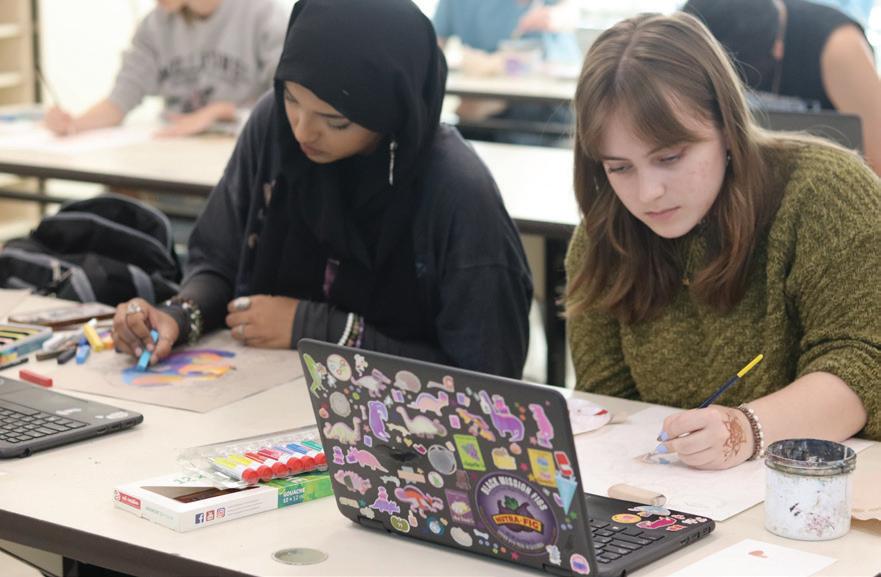
Man drives his car into a tree near Memorial Park, dies in a hospital after life-saving action (Sept. 18)
Omaha Council Member Ron Hug is inagaurated into the board (Sept. 19)
Ohio Supreme Court decides the phrase, “unborn child”, will remain in the ballot’s vocabulary (Sept. 19)
New COVID strain BA.2.86 found in 10 US states (Sept.18)
At least 6 Palestinians are killed in a violent dispute between Israel and Pakistan; only one of the latest issues in the Israeli-Palestinian tension (Sept. 20)
The Spanish feminine football selection puts an end to their boycott after Spain’s football federation announces changes to the program (Sept. 20)
THE HOOFBEAT STAFF EDITORIAL

magine being passionate about an opportunity but finding out that it’s no longer available for you. A field or profession you wish to dive into as a student, but the options are limited. A class that fascinates you, however, your chance to explore it is taken away.
Unfortunately, this situation has become a reality in Florida, where students no longer have the option to take AP Psychology in high school. This is a result of Florida’s state education board voting to place a ban on teaching sexual orientation and gender identity related topics from K-12.
With the development unit of AP Psychology including two minor topics related to gender and sexuality, the course has been effectively banned in the state.
The College Board said that Florida will permit districts to teach the course only if it excludes any mention of these essential topics, but if certain topics are taken out of the curriculum, AP Psychology can no longer be termed as AP. Even though schools have been granted permission to teach the class by Florida’s Education Board, the law has not been modified or updated in any way. Therefore, the College Board advises not to teach the course.
“Gender ideology has no place in our K-12 school system. It’s wrong for a teacher to tell a student that they may have been born in the wrong body or that their gender is a choice, so we don’t let that happen in Florida,” Florida Governor Ron DeSantis said.
However, when raising such concerns about specific topics and creating a law, it’s essential to consider how those topics are taught within a specific course and what value the entire course holds in today’s world.
First of all, there is a clear disconnect between how gender and sexuality topics are taught in AP psychology versus what Governor DeSantis perceives it to be.
The topics shouldn’t be termed as inappropriate and how they are taught should be the deciding factor. There is a clear difference between manipulation- telling students they are born the wrong way- and giving education based on research and scientific proof to understand how decisions are made and how the brain develops.
The American Psychological Association states that their National Standards for High School Psychology Curricula are developed through a rigorous process where high school teachers and college educators are consulted and supported by a National Standards Advisory Panel consisting of scientists as well as two K–12 science experts. Scientific inquiry and research methods are the base for every unit within the course.
The American Psychological Association believes that while the two banned AP Psychology topics may seem minor, they are still crucial for students to understand when taking the course.
“There is robust scientific literature on gender identity and sexual orientation. Excluding this content not only deprives students of an understanding of the breadth of psychological science, it prevents them from understanding human development and identity,” the American Psychological Association said.
Furthermore, AP Psychology teacher Brad Edmundson believes that psychology holds great value as it can be applied anywhere.
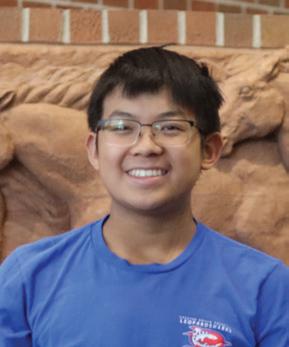

“To me, psychology is one of the most important fields out there because it influences everything. There’s not a profession out there that isn’t impacted by psychology. So, if they’re not able to take it because of whatever reason, they’re missing out on an opportunity that is very influential and very important in all kinds of fields,” Edmundson said.
Senior Nivi Varanasi was provided with a deeper understanding of herself and given tools for personal development through her AP psychology class.


“AP Psychology is a really, really good course to understand yourself, and how you can improve your life, the way you do things, and the way other people do things. It’s just helped me learn things on a more personal level but with a very broad view. What I learned from that class has helped me be better in my other classes, and be more productive and efficient in general,” Varanasi said.
According to The College Board, over 28,000 students in Florida took AP Psychology in the 2022-23 school year. So many students are missing out on the chance to earn college credit and take this illuminating course.
AP Psychology is a worthwhile course that can benefit students in various fields, aid in personality development, and enhance their understanding of the world around them. The fact that the course has been effectively banned in Florida is a significant loss of opportunity for students.
“I think that if content is introduced in an unbiased way, then it should be accepted. Forming our own opinions is important in our development.”
“Content shouldn’t be banned because it provides diverse perspectives that many people need to learn about to form effective opinions and to inform their actions.”
“I don’t think content should be banned because regardles of whether you agree or not, people have the right to a well-rounded education before forming their opinions.”
“Certain subjects in schools should be banned because kids are going through childhood and don’t need to be subjected to that yet.”TWEDT SENIOR LUCY CHO JUNIOR LIANA KORANDA SENIOR LEON ZHANG JUNIOR
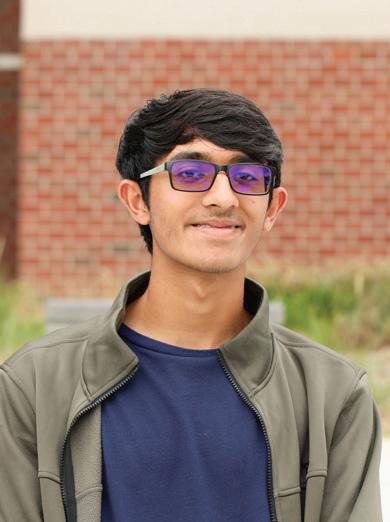
n January 6th, 2023, first grade teacher Abigail Zwerner was reading a book to her students when she looked up to see another of her 6-year-old students with his hand wrapped around the trigger of a handgun.
Zwerner barely survived the bullet tearing through her left hand before lodging itself in her front chest. Later that day, one of her lungs collapsed as she fought for her life. Unfortunately, incidents like Zwerner have become much too common. Teachers across our nation are constantly in danger due to our country’s most prevalent epidemic - our gun violence disease. It is only becoming worse, with the BBC recording more than 470 mass shootings this year in just 252 days as of September 10th.
Specifically, school shootings have reached an unprecedented level of prominence, as EducationWeek reports that there have been 5 school shootings since the school year started a month ago. In the wake of these devastating attacks, our legislators have taken zero action.
School shootings obviously can have a lasting impact on students, but often, teachers are entirely left out of the conversation about the impacts of school shootings. As a result, their pain is normalized and they are expected to put their lives on the line as a part of their job.
Specifically, while effects on students’ mental health have been at the forefront of the movement against school shootings, teachers are often not given a voice, despite being just as affected by these shootings.

“Even in the face of tragedy, it becomes hard to speak out. [It feels] like you are calling attention to your own situation in a way that is unnatural or uncomfortable for many educators who just want to go to work, just want to teach their kids, just want to be in their classroom and serve their community as best as they can,” Columbine High School social studies teacher Zach Martin, who attended the school during its infamous 1999 shooting, said.
Additionally, the added pressure of having to watch for warning signs also takes an immense toll on our educators. They must analyze every action their students take- every conversation, every word, every emotion, every single thing that happens in their classroom - on top of managing a classroom of students.
This is made even more serious when we consider the severe lack of school psychologists, both statewide and across our nation. In fact, a WOWT article reports that Nebraska currently has a ratio of 987 students to every school psychologist, compared to the recommended
As a result, teachers not only have to deal with the stress of possible school shootings, but they have been forced into constantly being on the lookout for warning signs, with a lack of psychologists to discover them.
But school shootings don’t just have a detrimental impact on teachers’ mental health; teachers have also become a form of defense in schools in many states.
For example, a July 31st, 2022 New York Times article reports that in Florida, more than 1,300 school staff members have undergone training to become armed guardians, with more than 400 school districts creating programs to encourage teachers to receive armed protection training.
Teachers received just twenty four hours of weapons training, making many of them uncomfortable and underprepared to face an active shooter.
“I attended a training [for teachers outside of Millard] and in it, they told us that if we have a gun and we need to point it at somebody, you need to be ready to shoot. It’s just something I can’t imagine myself doing,” chemistry teacher Debra Compton said.
It is unfair for us to add another burden to the already overbearing weight on teachers’ shoulders. They should not be forced to give up their lives in defense of their students.
Teachers like Eva Mireles and Irma Garcia, both fourth-grade teachers murdered while using their bodies to shield their students during the Uvalde shooting last year, should not have died.
They should not have been forced into protecting their students with their bodies. They should not have been shot and killed by a nineteen-year-old who shouldn’t have been able to access a military-grade assault rifle. They should be here today.
Teachers did not sign up to become defenders of their children. They became teachers because they wanted to educate the next generation. Because they wanted to spread knowledge and make a difference. Not because they wanted to become a line of defense against completely preventable violence.
We need to start treating our teachers how they deserve to be treated - as the people who form our minds, who put in hours of overtime to make sure that we receive a proper education, who sacrifice unimaginable amounts of time and money for their students’ happiness.
Steps such as banning assault rifles and increasing funding for mental health programs in schools will ensure that we can more carefully monitor warning signs in students; there will be a lower chance that a student can access dangerous weapons; but most of all, it will lessen the unbearable burden currently weighing down on our educators.
We must remember that teachers are not our scapegoats, there to protect when our government is incapable of taking meaningful action. Teachers are people who deserve empathy and appreciation. It is high time that we give it to them.

Sleep is a health necessity, but, for many high-schoolers, getting enough becomes a nightmare.
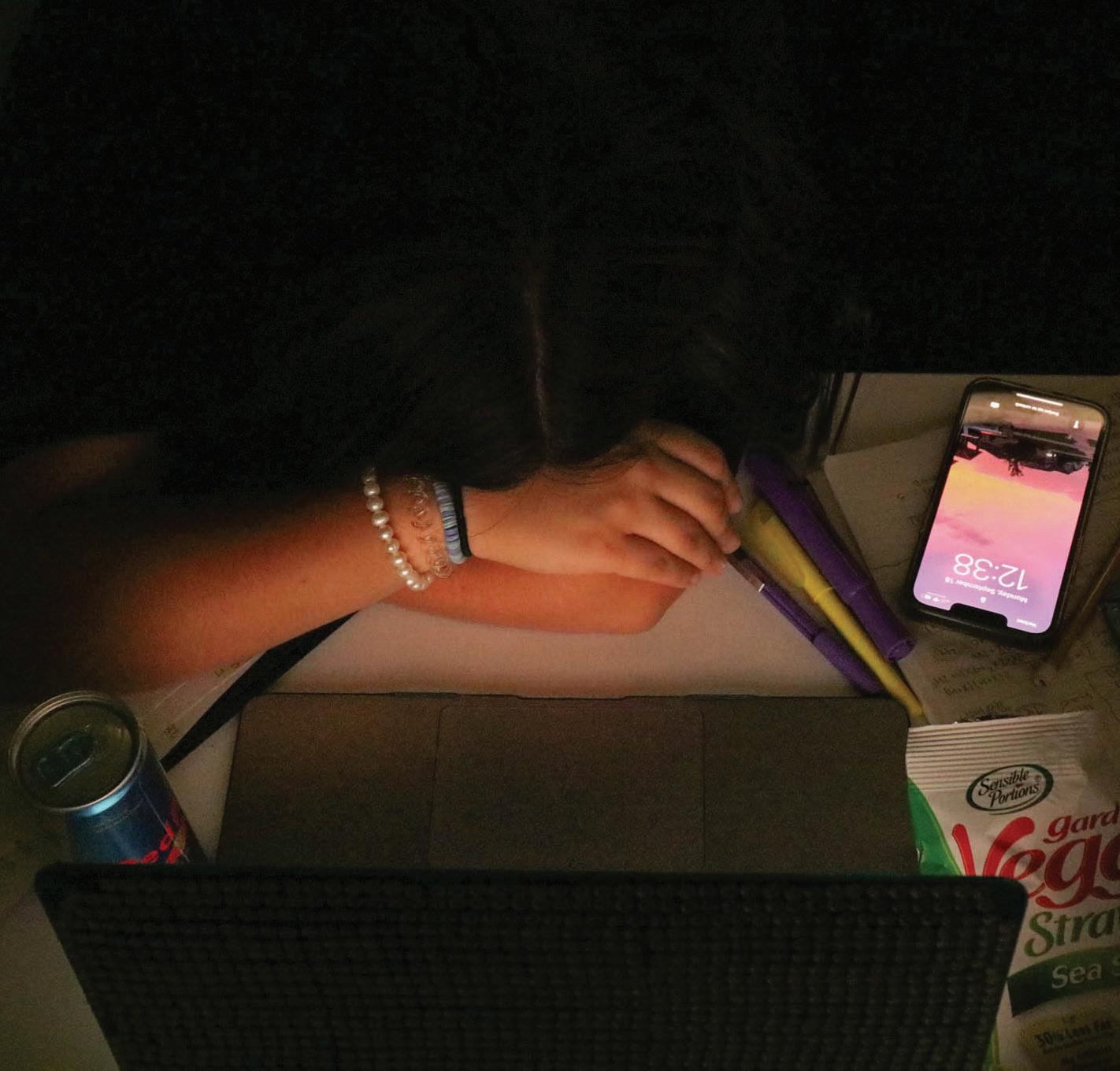
verwhelmed by buzzing thoughts and never ending attempts to fall asleep: squeezing their eyes shut, counting to ten, and taking deep breaths. Pulling the covers over their head, they lay awake.
The next day, head down on the table, eyes closing, junior Lennox Banderas tries not to fall asleep for what feels like the millionth time.
“I go to all my classes, ready to fall asleep during the day,” Banderas said. “I feel forced to be awake.”
Anxiety, busy schedules, energy drinks, screens. These are just some of the reasons why many students have sleepless nights.
“Honestly, on weekdays, [I get] 7-8 hours, going to bed at 10 or 11 and waking up around 6:40. Sometimes, on weekends, I go to bed at 4, but I usually go to bed at 12 or 1 and wake up at 11-1 depending on what I have to do that day,” Banderas said.
School Nurse Lindsey Murphy has been working here since 2019. She says that in the past few years, there has been an uptick in people coming in due to a lack of sleep.
“It is definitely an issue for students. That [an approximation] is difficult to determine as sleep deprivation can cause many different symptoms. Anything from headaches, stomachaches, and fatigue, to anxiety and depression,” Murphy said.
Insomnia, one reason for a lack of sleep, is a common issue for all ages.
The Mayo Clinic defines insomnia as a sleep disorder that can make it hard to fall or stay asleep, or because you wake up too early and can’t get back to sleep. Some symptoms of insomnia include difficulty sleeping at night, not feeling well-rested after a night’s sleep,

daytime sleepiness, increased errors, difficulty focusing, etc.
There are two types of insomnia: short-term, or acute, and long-term, or chronic. Acute insomnia lasts for days or weeks and is usually a result of stress or traumatic events. Chronic insomnia lasts a month or more, and results from stress or life habits such as work schedules.
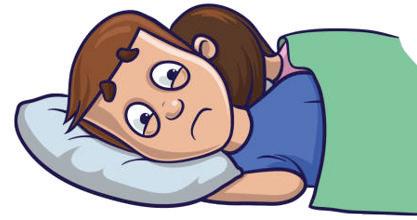
We can start helping ourselves by decreasing screen time substantially. Teenagers spend much of their free time on screens, whether it is a laptop, a phone, or a television.
“Our screens emit blue light which actually reduces the amount of melatonin that our body produces to help us fall asleep,” Murphy said.
According to Cleveland Clinic, sleeping disorders, which are changes in sleeping patterns that negatively affect health, are typically diagnosed by a physical exam and blood or imaging tests to learn more about the cause of your symptoms.
You could be asked to keep a sleep diary, which is a written record of sleeping habits. A sleep diary details when you fall asleep, wake up, and nap as well as how you felt before and after sleeping. It may also be recommended to visit a sleep specialist who can perform a polysomnogram, also known as a sleep study.
Getting good sleep matters for all age groups, but especially for developing teens.
Child Mind says that sleep deprivation, the condition of suffering from a lack of sleep puts teen-
NIGHTMARES CAN CAUSE PEOPLE TO WAKE UP AND SOMETIMES CAUSE DIFFICULTY GOING BACK TO SLEEP. THESE ARE OFTEN TRIGGERED BY STRESS OR ANXIETY.
TROUBLE FALLING ASLEEP OR STAYING ASLEEP. THIS CAN BE A RESULT OF ENVIRONMENTAL DISCOMFORT, ANXIETY, OR POOR SLEEP HABITS.
SLEEPWALKING IS LESS COMMON IN TEENS AND ADUCTS THAN KIDS AND IS TYPICALLY NOT A SERIOUS PROBLEM, AS MOST PEOPLE TEND TO GO BACK TO BED ON THEIR OWN AND DON’T EVEN REMEMBER IT.
SOURCE: HEALTHLINE.COM
agers into a haze and leads to an increased risk of injuries, inability to self-regulate, higher chances of getting into substance use and risky behaviors, poorer moods, and triggering of mental illnesses.
It’s important that teens consider what may be negatively impacting their sleep. Whether it’s homework, work schedule, or something else, finding a healthy balance between family, friends, work, school, and self care can help you and your mental state more than you know.
NARCOLEPSY CAUSES PEOPLE TO BE VERY TIRED THROUGHOUT THE DAY. THEY CAN HAVE SLEEP ATTACKS AT ANYTIME WHICH CAN BE DANGEROUS WHEN DOING SOMETHING LIKE DRIVING.
CERTAIN MEDICATIONS CAN CAUSE SOMEONE TO FEEL MORE ALERT AND UNABLE TO SLEEP, WHEN IT IS TAKEN BEFORE BED. THEY CAN ALSO MAKE ONE SLEEPY IF TAKEN IN THE MORNING.
THIS OCCURS WHEN A PERSON BREIFLY STOPPS BREATHING DURING SLEEP, DUE TO SOMETHING BLOCKING AN AIRWAY (SUCH AS TONSILS). A SYMPTOM OF THIS IS SNORING.
SOURCE: KIDSHEALTH.ORG
ontinuously yawning, as you trudge down the hallway desperately trying to stay awake after the plethora of homework and activities you did the night before. You arrive at your next class, but the feeling of burnout and exhaustion suddenly strikes you.
This is the experience that several high school students go through at least once each school year. Sophomore Ellie McKevitt, for example, is one of these students. “There definitely are a lot of activities. I am at school for show choir till about 9:30 two nights a week, and whenever we have extra rehearsals I’m here till 10, causing me to have to do my homework only when I get home, causing me [to] go to sleep later.” McKevitt said. “I typically go to bed at 11:30 on a school night, but a little later on the nights that I’m at school later.”
Her sleep patterns aren’t very uncommon when talking about high school students in general. In fact, according to the CDC, at least 2 out of 3 high-school-aged teenagers aren’t getting a sufficient amount of sleep every night. Different events and responsibilities such as sports, clubs, homework, and extracurricular activities outside of school can sometimes prevent high school students from maintaining a healthy sleep schedule.
Sophomore Srinika Ravinuthula is also a busy high school student, managing her sleep schedule along with her other responsibilities.
“My extracurricular activities and homework are what cause me to get less sleep,” Ravinuthu-


la said, “I usually go to bed around 10:30-11.”
According to The American Academy of Sleep Medicine, teenagers need to sleep for at least 8–10 hours each day.
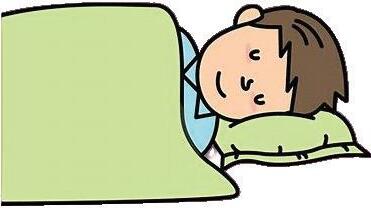
Although this is an expectation, high schoolers all over the country are sadly not meeting this criteria.
Excessive social media use in the night can also result in these shifted sleep behaviors.
In fact, according to the Sleep Foundation, social media has two sides. For one, it can help connect students together, but at the same time, it can heavily disrupt sleep patterns.
There are several reasons why a consistent and healthy sleep schedule is important.

Junior Mrittika Mukherjee truly understands the value of a good sleep schedule, and is even implementing one herself, which will help her to avoid long-term issues in the future.
“I set boundaries for myself. I try not to go on my phone at night too much, and I have screen limits so that I’m not on my phone in general, and that really helps,” Mukherjee said.

Furthermore, the National Library of Medicine states that teens typically need more sleep than adults because they are in a time of very fast physical, intellectual, and emotional growth.
Those who receive a poor amount of sleep per day are more likely to struggle with academic performance at school as well as more likely to experience mental health issues such as depression.
In fact, according to the CDC, some regular routines that will help promote better sleep quality include going to bed and getting up at the same time every day of the week, maintaining a calm and dark environment when time to sleep, and distancing yourself from caffeine or big meals before bed.


“I want to be able to have good health by prioritizing my body and myself over schoolwork,” Mukherjee said.
These solutions will help promote better sleeping habits among teenagers as a whole, improving their mental, physical, and emotional health.

LENGTH:
• 20-40 MINUTES IN EARLY CYCLES
• THESE STAGES GET SHORTER THROUGHOUT THE NIGHT
WHAT IS IT?
• MUSCLE TONE, PULSE, AND BREATHING RATE DECREASE EVEN FURTHUR
• IMPORTANT FOR GROWTH AND RECOVERY (AKA: RESTORATIVE SLEEP)
• IT IS HARD TO WAKE SOMEONE UP IF THEY ARE IN THIS PHASE
• DEEP SLEEP CONTRIBUTES TO MEMORY AND CREATIVITY
LENGTH:
• CAN LAST FROM A FEW MINUTES TO AROUND AN HOUR
• LENGTH INCREASES THROUGH NIGHT
WHAT IS IT?
• BRAIN ACTIVITY INCREASES - ALMOST TO THE LEVEL IT IS AT WHEN AWAKE
• BODY EXPERIENCES
ATONIA - TEMPORARY PARALYSIS OF THE BODY EXCEPT FOR EYES AND BREATHING MUSCLES. THIS IS HOW IT GETS THE NAME
REM, WHICH STANDS FOR “RAPID EYE MOVEMENT”
• DREAMS OCCUR IN THIS STAGE
LENGTH:
• 1-7 MINUTES
WHAT IS IT?
• THE BODY AND BRAIN ARE BEGINNING TO SLOW.
You open your eyes, see the all-too-bright light through your window, and immediately wish you weren’t awake. Closing your eyes, you imagine you are still driving a Ferrari or stuffing your face in that bowl of chocolate ice cream. But, just as suddenly as it came, your dream is gone.
Almost everyone has experienced this feeling. For the brief time that you remember a positive dream, you often wish you could fall back asleep and watch it play out again and again. Unfortunately, of the few things scientists know about dreams, they know you can rarely resume one.
In order to know why we dream, it is important to know where dreams come from. According to the National Library of Medicine (NLM), dreams are vivid hallucinations that occur during specific stages of sleep. They originate from the hippocampus, which lies deep inside the temporal lobe of the brain. Because the hippocampus is also responsible for memory control, your brain pulls from moments of reality and memories of your life to create a seemingly unique experience.
“The feeling of déjà-vu corresponds to the memory of an unconscious daydream. Fellow philosophers and I have also hypothesized that dreams provide the fragmentary memories later duplicated in a déjà-vu experience,” NLM researcher Jonathan Curo said.
Although scientists are not sure why we dream, there are, according to Healthline, several uses our brain might get out of dreams. One role our dreams might serve is training our fight or flight response. By simulating fight or flight situations, our brain gets used to making the best instant decision in a difficult situation. This type of training occurs in high-action dreams, which are very common.
“I once had a dream that I was late for class, and as I was running up the stairs, they started to fall and break apart. I had to run really fast so I didn’t
fall into the abyss,” sophomore Tyler Epstien said.
Another purpose of dreams is to exercise creative tendencies. When we are awake, our filter of logic can prevent us from fully using our artistic and expressive left-brain tendencies.
“I had a dream a couple days ago that I was a fashion designer for Taylor Swift during her tour. It was very strange but also enjoyable,” sophomore Morgan Jacobson said.
Of course, not all dreams consist of rainbows and butterflies, as they also sometimes serve as a negative coping mechanism. According to the Cleveland Clinic, negative dreams, or nightmares, can be a result of PTSD, stress, and irrational fears. Nightmares are also more likely to reoccur than positive dreams because experiences of fear develop stronger neurological pathways than experiences of joy.
“I’ve had many dreams before where I was being chased but I was stuck in place and couldn’t move,” sophomore Peyton Kragskow said.
Cultural and geographic factors also play a role in the type of dream you have had. For example, two students in Omaha are more likely to have the same type of dream than a student in Omaha and a student in Germany. This is due to the fact that our experiences shape our dreams.
“I often relate to dreams my friends have about school, because that is where we spend the most of our time,” Epstein said.

Of all the times you have discussed dreams throughout your life, you have most likely encountered someone who claims not to dream. However, according to Wonderopolis, every human dreams around every 90 minutes per night, amounting to twelve or more dreams. Those who claim not to dream simply don’t remember their dreams as the brain’s recall hormones are the lowest during sleep.
So, next time your alarm goes off in the middle of your sports car joy ride or ice cream binge, take a minute to reflect on the “experience”. Chances are, you won’t remember the dream for long.
• IT IS EASY TO WAKE SOMEONE UP DURING THIS STAGE
LENGTH:
• 10-25 MINUTES FOR THE FIRST CYCLE
• TYPICALLY BECOMES LONGER THROUGHOUT THE NIGHT
• ABOUT HALF OF SLEEP DURING THE NIGHT IS SPENT IN THIS STAGE
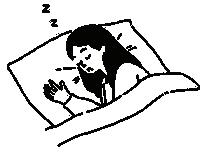
WHAT IS IT?
• MUSCLES RELAX
• HEART RATE AND BREATHING SLOW

• BODY TEMPERATURE DROPS

Ibeing in these classes that are just too rigorous for you.” Occasionally, that strict deadline or upcoming test is what actually drives motivation. Small amounts of stress can help students prioritize time and learn to cope with demanding

The Hoofbeat staff will publish six issues of the paper at Millard North High School (1010 South 144th Street, Omaha, NE). Type is set with the use of Macintosh and HP computers. Printing is done by White Wolf Printing, Sheldon IA. The Hoofbeat is a member of the Nebraska High School Press Association and JEA. The Hoofbeat exists for the express purpose of student information and learning.
 BY MIRA MUKHERJEE Staff Writer
BY MIRA MUKHERJEE Staff Writer
glance at my clock; it is already ten o’clock at night. Darkness seeps through my win dow, blan keting every thing in sight save for a small yellow lamp on the corner of my desk. The wind rustles outside, inter spersed by the clacking of a keyboard. I type fu riously at my computer in the hopes of finishing a paper before the midnight deadline.
In the reflection of my computer screen my eyebags are pronounced, dark circles apparent under my eyes. I type the last word and shut my computer, breathing a sigh of relief. I fall asleep the instant I hit the pillow, only to wake up the next day in dark ness yet again, with another midnight dead line that night.
Nights like these are common amongst high schoolers and the effects can have a negative impact. Late night study sessions have definitely affected my attentiveness and energy the following day. School feels like a race to the finish line, and I often feel overwhelmed at the amount of home work that is waiting for me each afternoon.
According to the American College Health Association, 87% of students feel overwhelmed be cause of school. Extra curricular activities and challenging classes can fuel these stressful emotions and the feeling of not having enough time.
“When you hit that point where your mental health isn’t at a good place be cause of the pressure you are putting on yourself for academics, that’s when I think you need to assess if you are taking the right classes for yourself,” counselor Jodi Therkelsen said. “Your mental health and life are way more important than getting straight ones or
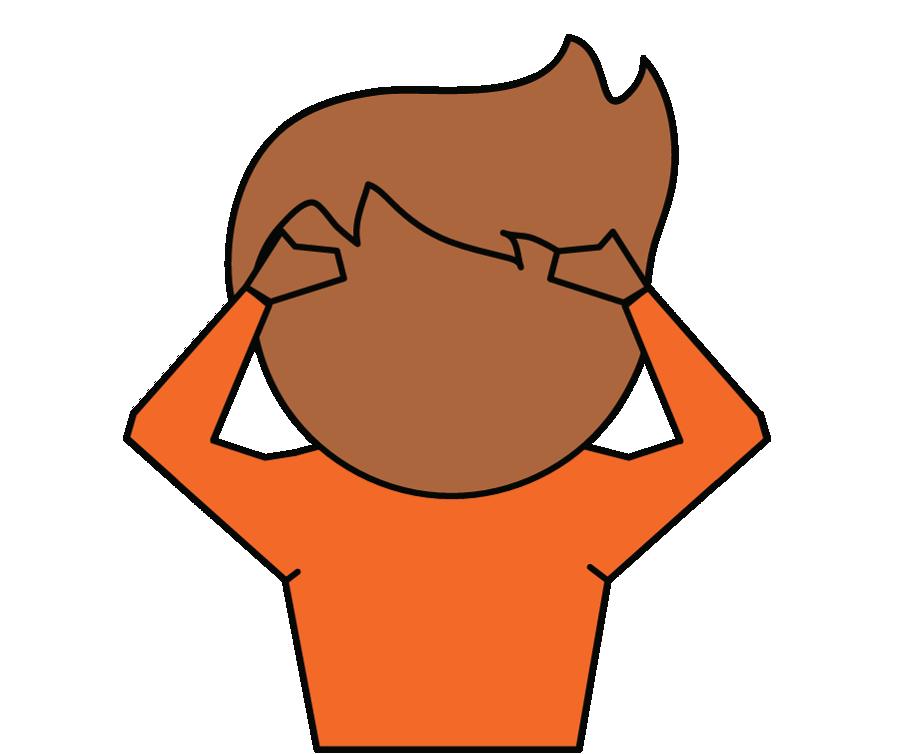
Living in this fast-paced society prompts students to develop habits for managing stress. I can always count on an outdoor run or a relaxing piano session to clear my head, but many adolescents choose faster-acting methods that end up causing more harm
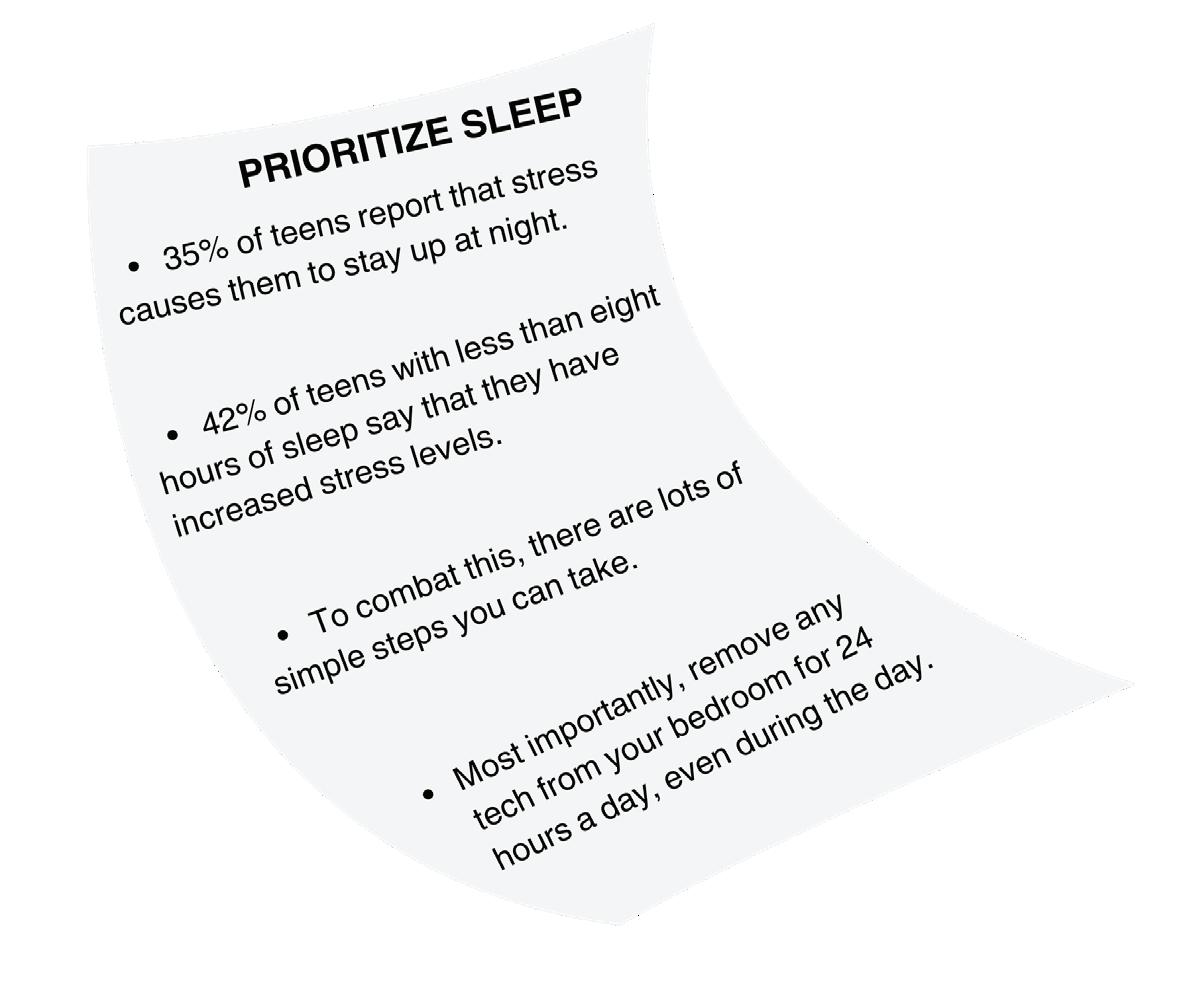
Current high school students need to ask themselves if a grade on a paper is worth more than their
A huge part of how I focus on my academic future stems from how I was brought up. My parents instilled in me the importance of hardwork and always told me to just try my best.
As cliché as that sounds, this philosophy has allowed me to truly figure out what I enjoy in school and focus on the educational aspect instead of less important factors.
Comparing myself to other classmates and worrying about others has led to feelings of selfdoubt, leading me to fixate on minute details.
It is difficult to focus on the individual and not the group. At this age we all want to fit in with the crowd, even if it means our mental health is put on the line.
I have previously succumbed to the pressures of academics in high school, from mounds of homework to frantic review sessions, and looking back the amount of stress is just not worth it.
The mindset of school being a hub for knowledge has made school more enjoyable for me. With good coping mechanisms and basing my worth on my values rather than a grade, I am able to dedicate time to what really matters to me. Looming academic pressure can cause students to lose sight of what is important, but, if we are able to look past the cloud of pressure, we will have the opportunity to reap the benefits of education; success following in pursuit.
Advertising: Advertising will be sold at $7 per column inch or by special quarter, half, or full page rates. Information can be obtained by calling 402-715-1404.

Responding to the Hoofbeat: Letters to the editor may be submitted to Room 1105 or sent to sacrotzer@mpsomaha.org. Names will be published. Letters must not contain attacks against an individual and may be edited for clarity.
Editor-in-Chief
Teagan Lynch
Front Page Editor
Elias Pipinos
News Editor
Mia Castro
Opinions Editor

Anuj Singh
In-Depth Editor

Teagan Lynch
Lifestyle Editor
Natalie Hill
Sports Editor
Callie Menke
Social Media Editor
Cece Vlieger Adviser
Sarah Crotzer
Principal
Aaron Bearinger
Cartoonist
Violet Bredenkamp
Photographer
Kai Pavlova
Cece Vlieger
Staff Writers
Grace Evert
Sumanas Maram
Mira Mukherjee
Kai Pavlova
Renia Pipinos
Mahdis Riazikhah
Sarah Robey
Prisha Sabherwal
Teja Sridher
Matthew Um
Find us on...
Twitter: @mnhoofbeat
Instagram: @mnhs.hoofbeat
Website: mnhsonline.com

have high-fived abusers. After a hard fought soccer game, my team and I go down the line, exchanging “good games”, high-fives, and smiles with the other team. It is impossible to tell whether the coach at the end of the line inappropriately texts or touches his players or views their relationship as more than just mentor and mentee.
We’ve all heard the stories: Larry Nassar, Jerry Sandusky, and so many other coaches, trainers and trusted adults in the sports world. I’d heard those stories too. However, nothing hits harder than hearing such stories from my own teammates.
I would never have known that the coach at the end of the line had asked his players for sexually explicit im ages, to bring him food and candy, found and saved hun dreds of pictures of them, while often threatening play ing time if they didn’t comply to requests.
Thankfully, this specific coach was reported and is currently serving time in prison for attempted child en ticement, but, in many cases, there isn’t such a happy ending.
Sports are meant to be a way to escape, a safe place to spend time with friends playing a game that you love.
Unfortunately, this highly emotional, free from pa rental gaze environment also makes it possible for an in dividual in power to create an unsafe relationship with youth athletes.
According to the International Olympic Committee, most abusers follow a common set of steps in the groom ing process.
The first is targeting a potential victim. A coach spends lots of time with their players, so they take this opportunity to observe which athlete is most vulnerable and create a friendship.
The second stage is developing this relationship. This is done by making the athlete feel special, listening to them, and beginning to bargain. For example, “if you
do this, I’ll do that”.
Then, they begin to develop isolation and control. They will demean and restrict non-sport relationships and begin to use small tests to check the child’s commitment and reliability.
Finally, they gradually initiate the sexual abuse and secure secrecy. Common strategies include guilt-tripping, offering protection, and threatening. Threats can range anywhere from less playing time to exposing confidential information about the athlete.
According to the U.S Center for SafeSport, 93% of athletes who experienced sexual harassment or unwanted contact during their time in sports did not report it.

There are several reasons for this startling statistic. One being fear of rebuttal from the perpetrator. Another is the lack of truly registering that what is happening is not acceptable or normal behavior.
Being an athlete for several years myself, I have
heard, witnessed, and experienced several uncomfortable situations-- from things that seem as small as unwanted touches to misplaced comments to extreme forms of sexual abuse. Young athletes wonder if their discomfort is truly warranted, or just them being overdramatic.


Personally, I have never received a presentation or warning concerning misconduct in my sport through an organization I played for. With such a lack of education, many athletes with concerns have no way of knowing what should be reported or even where to do so.
At the highest level of any school or sports organization, standards should be set, detailing how athletes and those in power are allowed to communicate and specific boundaries regarding physical touch and language.
Education for all, especially coaches and officials, is also incredibly important. Most coaches have nothing but positive intentions, but awareness of boundaries will help to increase trust with their athletes and ensure even unintentional discomfort is avoided.
According to Athletic Director Keith Maly, coaches in the MPS district are required to take a sexual harassment seminar at the beginning of each year. The National Federation of State High School Associations (NFHS) also has courses that coaches or sponsors can take at any
Along with this, all organizations should have a way to report - and follow up on the reports of - any misconduct and breaking of boundaries, no matter how severe.
In Millard, there is a chain protocol used to address concerns. The athlete must first speak directly to the coach, and if nothing changes, meet with the Athletic Director, coach, and parents. If necessary, they then meet with District Athletic Director.
Another option is for athletes to anonymously report concerns. This can be done through both the Safe 2 Help Nebraska and the US Center for SafeSport websites.
The goal for any school or sports organization should be to create a fun and safe environment that promotes learning and development. Not making an active effort to protect participants and hire staff that have pure intentions is completely unacceptable.
As a society, we must take the power out of the hands of abusers and put it in the hands of the youth. Our palms are open and reaching for resources, education, validation, and, most of all, a safe place to do what we

ooking around your room all you see are dull walls, an empty floor, and a boring bed. A rug made by Senior Josh McFadden could just be the thing to tie your space together. With the help of a Millard West student, he runs a small business that sells decorative rugs. They can add a pop of color and dimension to your space, whether they’re used to decorate your floors or walls.
McFadden was inspired by the internet trend of rug-making. He used YouTube throughout the trial and error process of creating his first rug.
“It was stressful because of the fear of messing up and a lot of things went wrong like it not looking great, the fabric ripping, and et cetera,” McFadden said.
McFadden finally completed his first rug in December of 2021 and started his business in January of 2022. A month after starting his business, he sold his first rug.
“Selling the first rug was a great experience because it gave me hope that selling rugs was possible and profitable. It gave me the excitement to make and sell more,” McFadden said.
McFadden sells a variety of rugs. He makes cars, album covers, football team logos, popular characters, phrases, and also accepts custom orders.
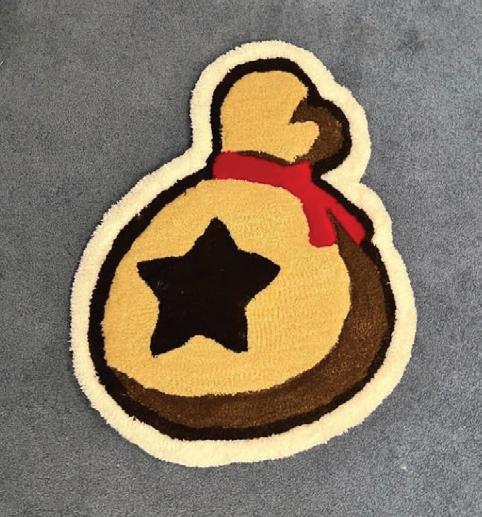
When it comes to personalized and custom orders McFadden wants to guarantee that every detail is correct and the customer is satisfied with their rugs. Senior Shalom Manyara bought a personalized blue rug that spells her baby nephew’s name, Coast, to put at the foot of his bassinet.
“[Josh] wanted to ensure that the rug was exactly what I wanted and even sent me the colors of the yarn at the store,” Manyara said.
McFadden wants to make certain that the needs and the satisfaction of each and every customer is met. In order for this to happen there has to be constant communication between him and the customer.
“The consistent communication between me and Josh helped with the outcome of Coast’s rug. It was exactly what me and [Coast’s] parents dreamt of and was exactly what he needed in his room,” Manyara said.
A high level of communication helps develop trust with clientele. It also helps customers articulate their needs and expectations, as well as any challenges McFadden may face during the rug-making process.
1. Set up a new piece of fabric on the frame
This rug is one of McFadden’s most recent creations. It is based on the popular video game franchise Animal Crossing.
Photograph from made_by_josh on Instagram
take up to anywhere from three to eight hours to create.
“I get to work whenever I want from my house and I can stop whenever I need if I have something else to do. My hours for my business are as flexible as I need,” McFadden said.
Day to day, McFadden balances his business, school, work, and soccer. He is on the varsity soccer team and plays for Sporting Nebraska FC.
“For me soccer always comes first and I can work whenever I want to. It usually fits right around my soccer schedule,” McFadden said.
McFadden plans on majoring in entrepreneurship as well as business and minoring in art. With college comes
4. Apply glue to the back of the rug and wait 24 hours
2. Project the image that the rug will be modeled after onto the frame and trace it with sharpie
3. Load the colored yarn into the tufting gun and begin creating

6. Clean up the rug by gluing excess fabric to the back, applying the felt back, and shaving the rug
5. Cut the rug off the frame before continuing work
Whencreating hisrugs,McFaddenfollowsthese steps:
The sun shines brightly overhead, warming the ground beneath it. This hot July day provides the perfect pool conditions for most, but senior Annika Krizmanich has other plans. Clad in riding boots and a durable pair of jeans, she prepares to spend her day surrounded by horses.
Krizmanich spent much of her time this summer with Heartland Equine Therapeutic Riding Academy (HETRA), a barn located in Gretna, NE. They offer hippotherapy, a form of therapy that uses horses and their natural movements to aid clients in the processes of physical, occupational, and/or speech therapy.
“It’s been a really moving thing to work with all these horses that do therapy work. Prior to this summer, I hadn’t worked with or seen anything of that sort,” Krizmanich said.
Founded in 1989 by Steve and Janet Henthorn, HETRA has grown to include 28 trained therapy horses and over 150 participants.
“HETRA’s mission is to improve the quality of life both physically and emotionally of adults and children of all ability levels through equine-assisted activities, ” HETRA Riding Instructor Cassidy Godden says.
Krizmanich began shadowing at HETRA in April of this year, and spent her summer fast tracking through the training program. Time well spent resulted in climbing the ranks and earning various certifications that allow her to complete multiple jobs around the barn, such as grooming the horses and walking alongside or in front of them during therapy sessions.
“I was definitely a little nervous starting the fast tracking process, but after meeting everyone the environment just felt so safe, welcoming, and supportive. I’ve always felt like I’ve had multiple homes, and now HETRA is one of them,” Krizmanich said.
Krizmanich became involved with HETRA by riding recreationally and competitively with HET-
Daughter: A young Annika
Krizmanich is held on the back of a horse by her mom, Britt Krizmanich. This early exposure to horses helped foster Annika’s lifelong passion for all things equestrian.
Photograph contributed by Annika Krizmanich
RA CEO Edye Godden, the owner of Krizmanich’s horse, Summer. Although she’s spent the last three years at Godden’s barn, it isn’t where she started riding.
“I always like to say that my horse career in entirety, started with my mom,” Krizmanich said. “From early childhood I would be set on [my grandparent’s] horses’ backs and had that exposure to them.”
Such early experience with horses fostered a lifelong love for the ani- mals.
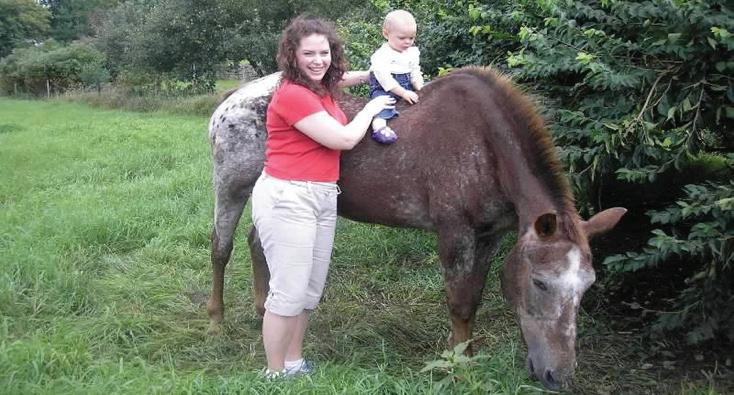
in it. I would love nothing more than to keep riding.’”
Faced with the task of finding a new barn to ride at, Krizmanich and her mother reached out to Godden at her barn in Valley, NE. Since becoming involved there, Krizmanich has grown in her knowledge of and love for horses.
“Every horse that you work with is so different. They’re like people in the sense that they all have their own personalities, so it’s interesting to work with them and see not only how they react to you but to their surroundings as well,” Krizmanich said.
Through years of work and dedication, she and her horse Summer have grown together, each of them maturing over time.
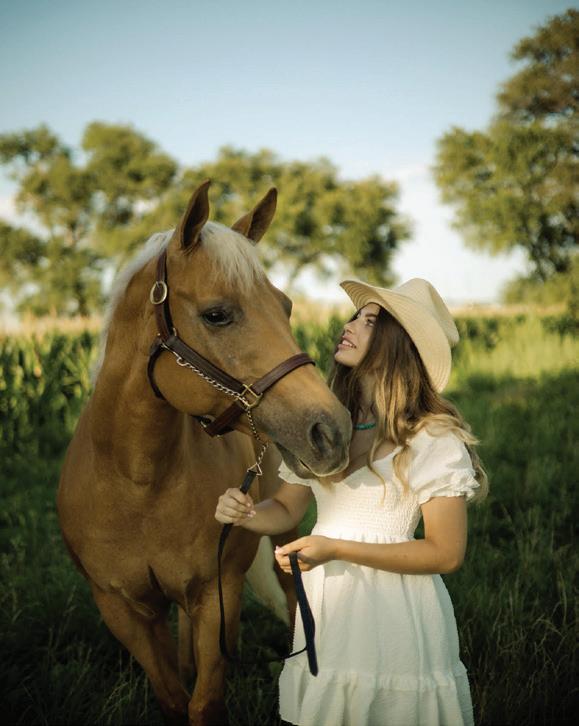
“It has been such a rewarding thing to see [Summer] become more comfortable with me, and I can feel the trust that’s been built up over time,” Krizmanich said. “It’s also taught me so much patience, because it’s been such a long process of getting her comfortable, and I’ve had to change my mindset and how I respond to her behavior.”
Krizmanich’s mother, Britt Krizmanich, played a large role in A. Krizmanich’s journey of becoming an equestrian.
“Annika was interested in horses from really early on,” B. Krizmanich said. “She always had some sort of horse toy around. By Kindergarten, I bought her a Groupon for a riding lesson, and we never left.”
Shortly after moving away from her mom’s family (and horses) in Pittsburgh, PA, A. Krizmanich began riding and competing with a barn called Miracle Hills in Fort Calhoun, NE, where she rode her first horse, Zip, until 2020. It was then that the owners made the decision to move to the Ozarks, taking their roughly 20 horses with them.
“Once we heard discussions of [the owners] moving and selling their property, my mom and I sat down and had a discussion about whether I wanted to keep up with riding,” Krizmanich said. “I told her ‘Mom, I don’t see a future for myself without horses
As she’s made clear from a young age, Krizmanich has no plans to stop riding, and hopes to continue both her recreational/competitive riding and her work with HETRA into the future.
“After college I’d be interested in coming back [to HETRA] and seeing if I can have a job there as a therapist, actually leading those sessions,” Krizmanich said. “I enjoy it so much, and I feel like I’m giving back to the community.”
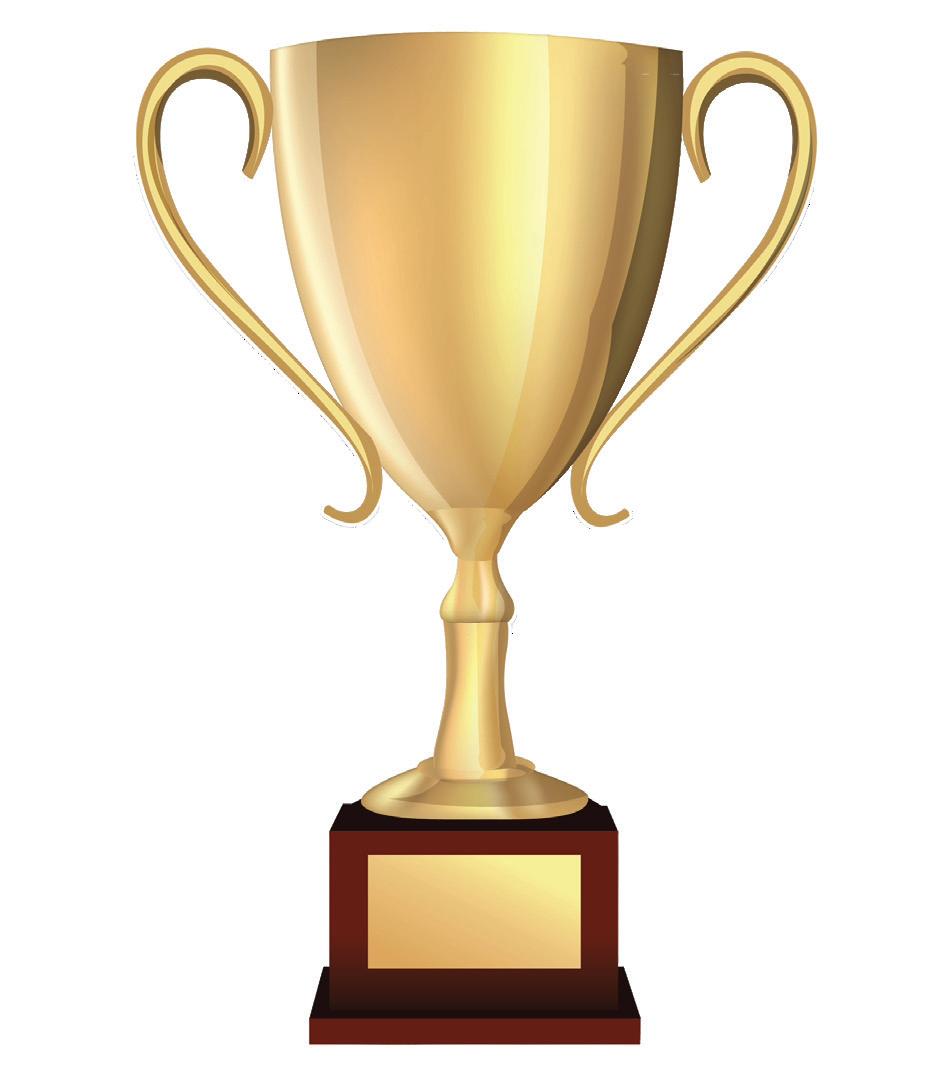
Although she wasn’t able to compete this season, Krizmanich has won various awards in years past and plans to compete for more next summer. Her recognitions include but are not limited to:
WORLDWIDE
PHBA World Championship’s Youth Color - 7th Place (2022)
PHBA World Championship’s Youth Hunter in Hand - 11th Place (2022)
NATONWIDE
PHBA Top Ten Standing Youth Walk Trot Showmanship - 2nd Place (2021)
PHBA Standings Youth Walk Trot Western Pleasure - 5th Place (2021)
4H
Senior Sentiments: Krizmanich poses for a senior photo with her horse Summer. She has been showing Summer since 2022.
Photograph contributed by Annika Krizmanich
Washington County Fair Intermediate Showmanship Champion (2019)
Washington County Fair Chamption Intermediate Overall Horesman Award (2017)
“
I dont see a future for myself without horses in it. I would love nothing more than to keep riding.
ANNIKA KRIZMANICH SENIOR
”
he crisp autumn air creeps up as the bright, exhausting summer heat melts away. That’s right, it’s fall y’all. As the beloved season makes its way into our hearts, a special guest joins us: the fall menu. Jam packed with pumpkin spiced everything, the fall menu only comes for the three months of September, October and November.

Of course you could go for the boring old Starbucks and Scooters, but those are a bit overrated. Why not try something new, something different? Therefore, in the name of all fall-seasoned beverages, I have devoted my amazing taste-testing skills to find the perfect seasonal drink. Our first contender was Zen Coffee, located on 2505 S 133rd Plaza. I opened the bright green door to the small coffee shop and was greeted with smiling faces. I was enticed by the pleasant smell of fresh coffee. Plants filled the walls around me as I stepped to the counter and ordered a classic pumpkin spice latte.
After excitedly chatting with the kind employees, they set out to make it their mission to make me the absolute best pumpkin spice latte they could.
I watched with anticipation as my pumpkin spice latte was carefully curated. Once I received the drink, I chose a spot in the corner where two small blue velvet arm chairs surrounded by plants shone in the sunlight. With excitement, I took my first sip. The coffee blend was light with a smooth finish. A sweet cinnamon scent and wave of flavor washed over me and a subtle kick of pumpkin settled in.
I sipped the delightful warm drink as I took in the bustling room of people. Many were occupied by their studies but others were enjoying friendly meetups and undergoing work meetings. Loud music and chit-chat
sphere a little louder than I had hoped. For studying purposes I’d take the drink to go, since the loud music and friendly individuals surrounding you can make it hard to block out all the noise. I would rate the atmosphere a 7/10.
While the atmosphere was a little overwhelming, it’s hard to beat fantastic customer service and delicious coffee, making the final rating a 8.5/10. Zen is the perfect place to grab coffee with a friend but not the most quiet for a study session-unless you have noise canceling headphones ready to go.
drink started with tangy apple foam that soon was met by the chai which created a sweet and milky flavor. It was sugary but also had a fun, tangy taste to it that almost felt similar to an advanced apple cider.
In full honesty, the drink was good. The apple chai rated a 8/10. Although it was an enjoyable beverage, I felt as if the apple chai tasted too similar to an apple cider which knocked off a few points in the long run. Not to mention due to the lack of study room available for customers the atmosphere was a sad 0/10, leaving Hardy’s Coffee at a final rating of 4.5/10.
Our final competitor was Stories Coffee, located at 1432 Davenport St Ste 1. As I entered Stories Coffee I was shocked to see a room packed with pencils moving fast, friends giggling and families chatting, all while the hum of good country music played over the commotion. I struggled to find a place to sit, but settled on an unoccupied smooth, leather armchair.
My second stop was located at 14450 Meadows Blvd. Hardy Coffee was said to be the perfect place for good and convenient coffee. With this in mind I pulled up to the loca tion and was shocked to see that there was no inside to this coffee shop, it was simply a drive through.
Supporting local and small businesses directly benefits the community. Here’s how these coffee shops are giving back:
Zen: giving a portion of their profits to schools in the area
Hardy: valuing convenience to make good coffee accessable on-the-go Stories: donating to non-profits to reach as many people as possible
I could understand why it was convenient for there to be a drive through for some peo ple but it was certain ly not convenient for me. Therefore right off the bat I had to give the lack of atmosphere a Things only seemed to get worse as I was informed that the only remotely fall drink that would be available to me was an apple chai. Reluctantly, I moved forward and ordered the drink and thank goodness I did.
While I saw a variety of fall flavored beverages I ultimately settled on a pumpkin flavored latte. The menu had a variety of options, but I decided to land on just a pumpkin flavored latte. When I received my drink I thanked the quiet employees who all returned to bustling around the kitchen.

I went back to my seat and took my first sip. The coffee was very hot and had a strong roast, leaving a bitter taste in my mouth. The bitter flavor of coffee waived as the vegetable flavor of pumpkin came and went.
I could only manage to gulp down about half of it.. The strong bitter taste simply wasn’t enjoyable for me. In conclusion I have to rate Stories coffee a bitter 2/10.

The saving grace of Stories was the atmosphere. The comfortable seating and relaxing soft music that played made it the perfect place to study. In all fairness the atmosphere was a good 7/10, making Stories’ overall rating a 4/10.
In the end Zen Coffee won 1st place by a landslide with a final rating of 8.5/10, crushing the competition
oyle Brunson, the professional poker player once said, “Poker is war. People pretend it is a game.”
This saying not only applies to poker, but it also goes for many other activites. Having read this quote. varsity softball Coach Travis Unzicker adapted it to softball.
As the softball team gears up for a new year after the previous successful season, they know they already have a winning hand because of one special tradition. This ritual of their’s helps remind the coach and the players that they are all part of the Millard North softball team and that they all belong.
This distinctive motivation is done through poker chips. Unzicker began this tradition when he began coaching here four years ago, back in 2019.
“I wanted something tangible that the girls would receive when they made the varsity team each year,” Unzicker said.
Every year, the girls on the varsity softball team receive poker chips to keep with them during games. These chips are personalized to MN as they are colored white and blue, with a mustang and horsehoe image on either side. Additonally, there is a motivational hashtag to push them not only through games but through practices, as well.






“The poker chip is something I hand out to every player that makes the varsity team,” Unzicker said. “The girls now put the chip in their pockets for all games, and we have made it a calling to “Earn the Chip” for all players.”
Not just that, but the chip is more special than just a good design. Sophomore Macey Jarose explained the
chip has sayings on it to help them work together.
“On the poker chip, (we) have our sayings on it, and these sayings help us stick together during an intense game because it lets us know that we are all playing as one team, not as individuals,” Jarose said.
The tradition gives the girls a bigger sense of team, of something that they’re all in together. Earning a poker chip can be akin to really earning a spot on the varsity team, and the chip gives you a sense of accomplishment that you made it and earned it.
“It has kind of grown over the years and has become a huge culture piece that gives the girls a sense of pride for earning a varsity letter,” Unzicker said.
The softball team definitely agrees with Unzicker on that.
“That to our team brings us all together and shows that we earned our spot on varsity,” senior Addyson Hobza said.
This tradition is not anything common. In fact, it’s unique to Millard North softball and was brought to the school by Unzicker himself.
“I have never heard of anyone having this tradition. I wanted something original to start at Millard North,” Unzicker said.
Unzicker’s dedication to Millard North and the softball team is especially evident by this tradition. He has in the past coached football, baseball, and basketball, but softball is the one that he sticks with at MN.
“I love the relationships earned from the









team. [They] drive me to always try harder for them.”
These relationships make the bond between coach and team stronger. Both work hard to make each other better.
“He believes in us and wants us to succeed. Something I love, while we are playing a game, is that he is the biggest competitor I know and hates to lose just like me. It’s like he’s playing with us out there!” Jarose said.
Players also support Unzicker and his drive to make the player the best that they can be.
“He knows what he’s doing, and he tells the girls what they need to work on,” Hobza said.
All varsity players earn their very own Mustang poker chip. Pictured is freshman Tenley Kampbell, proudly holding up the poker chip before a softball game.
Photograph by Carley Stych
With this unquestionably unique tradition bringing players together, the softball team, led by coach Unzicker, are set up for a successful season. No matter the outcome, however, we know that the team chemistry has hit a home run with this custom.
 CECE VLIEGER Staff Writer
CECE VLIEGER Staff Writer
ans’ emotions roar as the team hits the field. It takes blood sweat and tears to play football in Nebraska. It’s embedded in our school’s DNA. Building the backbone of the Football program for over the past 40 years wouldn’t be possible without varsity football head coach Fred Petito.
Though he doesn’t want to be celebrated, we recognize what he has done for 40 years for this team, and its program. He has put his heart and soul into this program making our team what it is today. Without Petito MN wouldn’t have come this far.
Petito has been coaching at MN since 1983. In this time, he has many accomplishments from winning State Championships to creating players that would go on to play in college and professionally.
Petito got his start by playing college football in Hasting, Nebraska for the Hastings Broncos. Having grown up in Chicago, he was ready to take on being a cop. However, his parents had other plans.

“I was right out of high school. I was 17, and my mom and dad said ‘no you’re not going to be a cop, you’re a good student, You have the ability to play,’” Petito said.
When his time at Hastings was up, Petito became a coach at Western Kentucky University. After working at Western Kentucky, Petito worked at Cathedral for two years before getting a job offer from Millard North.
Petito has had many achievements over the years. He has led his team to five State Championship wins and three state runner-up wins. He was also named Outstanding Alumni Coach Honoree at Hastings in 2004 and the Lincoln Journal Star Nebraska Football Coach of the Year in 2011.
Petito has also had the opportunity to coach Heisman Trophy Eric Crouch, winning it in 2001, three months exactly after 9/11 occurred. Petito saw potential in what Crouch could do. He always pushed Crouch to work harder and do his best to his abilities.
Football
Petitio is one of the best guys you’re ever gonna meet, very high character, he’s very self confident. Truly one of the most solid people.
“I really appreciate how hard he made us work, and how he really cared about building our confidence as young men,” Crouch said. “He challenged us to be better, he wanted us to push past what we thought our limits were,” Crouch said.
Even with former players moving on to other endeavors, some former alumni come back to teach at the same school as their former coach. English Teacher Jacob Bergmeier went from playing running back for Petito, to teaching with him.
Bergmeier is currently now a track coach. He takes some of his former tactics and lessons and implements them into his coaching.

“I would say as a track coach I pull a lot from his certain style and mentality he has,” Bergmeier said.
Bergmeier often took what Petito had to say to heart and used it to have a positive outlook on things. He would call them “Petitoisms.” Where when players felt down in the dumps, they always could find a pick-me up in his sayings.
“If students would complain about not being fast enough, not being tall enough, not being strong enough he would kind of off the collar say ‘well you should have picked your parents better’,” Bergmeier said.
legacy Petito has continued to build.
“I’ve come to find that the people that are still present in my life are from that team. So Petito really worked on trying to make it like a family environment,” Bergmeier said.
Petito also has stuck with his traditional coaching from his very beginning. Petito, unlike other coaches, plays with the players he is giving without recruiting. Though this is controversial, he gives the players he has the opportunity to show him what they got.
“The notation of saying I’m not gonna go out there (to other schools games) to go recruit, I really wish other schools were like that. I felt for the first time coming here that I was seen for the value that I had and what I could offer to the team,” Bergmeier said.
Senior quarterback Evan Hansen has seen how the team has grown and changed over the years. Petito holds meetings for the quarterbacks to go over plays and figure out the best tactics.

Under The Lights: Coach Fred Petito concentrates on the Sept. 9 MN vs MS game. Amidst the adrenline, players look to Petito for guidance.
Bergmeier also takes the family aspects Petito implemented and tries to apply it to his classroom community
“We put our blood, sweat, and tears into the old adage of the brotherhood right, not like a fraternity but a family,” Bergmeier said.
Petito also wanted his players to work as a team. Most alumni come back to watch games and support the
“They’re (his tactics) a lot more old school. They work especially for our offense,” Hansen said.
Petito looks for players that have the drive and commitment to the team. Pushing their limits and their boundaries physically and mentally.
“ A lesson he has taught me is just always about making sure you’re fully committed to what you’re doing,” Hansen said.
It takes physicality and the mentality to break through the other team’s tactics. The family built on and off the field is what gives the team a win as one and even takes the hit of a loss as one. The legacy will live on with the players and the program Petito built himself.

He really cares about tradition and wants to do the best for us as a team individuals.
He’s an all time great. He is always there for everyone and he is overall a great coach for every body on team.
Caleb Klein SENIOR FootballPetito is like a grandfather figure, he’s somebody who really cares about you and takes care of you and is always looking out for you.
SUMANAS MARAM
Staff Writer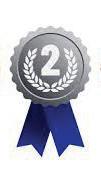
itting alone on the sidelines, watching all your teammates practice for the upcoming game, the desire to join them tugs at your spirit; yet, an injury keeps you confined, casting you out of action for what feels like a lifetime.
Injuries in sports are inevitable. In fact, according to AdventHealth, over two million high school athletes each year face the harsh reality of not being able to compete because of them.
However, for some athletes, these injuries do not stop them from coming back or take away motivation to continue playing, but rather act as a period of reflection and rejuvenation.
Senior volleyball player Maddie Fee was among these athletes. She suffered an ACL tear her sophomore year, which would typically amount to a year-long absence, but the time doubled to a two year long absence after rupturing her quadriceps tendon junior year.

“[Being out] was upsetting because it was something that I couldn’t control, but it pushed me to want to get better and constantly work out so I could get back to the sport,” Fee said.
Another student-athlete, Senior Brayden Hemje, also had various injuries that set him out for a full cross country season and full track season.
“It really sucked, you got to see all your friends go down to the track for warmups; you don’t realize how
much you actually miss [the sport], until you’re not able to do it anymore,” Hemje said.

But it’s not just the player’s individual mentality that helps them get back; the role that their community plays is just as important.
“My friends didn’t want these injuries to fully overtake everything I did, and they really pushed me to not give up,” Fee said.
Funny Bone: Athletic trainer, Emma Buamann tapes up injured athlete. When expieirencing an injury treatment is the fastest way to get back to the game.
This social aspect of sports has also been one of the most motivational factors for an athletes’ desire to continue playing. They are willing to come back for the team as much as they are for their sport.
“Every time you go out on a run with your friends, and the days when you work out with all of them is why I like the teamwork aspect [of team sports] over individual sports,” Hemje said.
Although, friends play a key role in recovery. Coaches and training staff are as instrumental in the recovery process by creating a strong support system, allowing the athletes to focus on rebuilding.
“My coaches were helpful as they told me when to take [days] off and when to run. The training staff and training room were helpful in my recovery as well,” Hemje said.
Ankle Sprain
An ankle sprain occurs when you turn your ankle in an unnatural motion. This can stretch or tear the tissues. Symptoms include striking pain when bearing weight on the affected foot, tenderness of ankle, swelling, bruising, restricted range of motion, instability in the ankle.
A concussion is a traumatic brain injury that affects brain function. It occurs after an intense blow or jolt to the head. Concussions affect concentration, memory, balance and coordination. Common symptoms are headaches, ringing in the ears, nausea, vomiting, fatigue or drowsiness.
Athletic trainer Emma Baumann, who helped treat Hemje among various other student-athletes, sees many types of injuries, but only a few that are threatening for an athlete’s season.

“Minor injuries are pretty common especially in contact sports. Bruises and soreness are the most common minor injuries. However, a major injury that ends the athlete’s season would be such as a broken bone or a torn ligament,” Baumann said.
As a trainer, she not only has to help students with their physical injuries, but she also has the job of making sure they are doing well mentally, observing how students react depending on their conditions.
“Plenty of athletes go through the five stages of grief after a season-ending injury. It is very important that they stay involved and feel like they are still a part of the team even after a season ending injury,” Baumann said.
However, she believes that the small steps are the most important way for athletes to overcome their grief and pain, aiding them in fighting to return to their beloved activities.
“I try to motivate them [by telling them] that they can get back as soon as possible. I show them the little victories while during rehab exercises. We set little goals to see if they can achieve them. I have had a couple injuries previously so I try to make connections with them over that,” Baumann said.
For an athlete, being forced away from their sport can feel like breath being stolen from their lungs. But for some, their love for the sport holds enough motivation to push them through recovery.
As Fee and Hemje look forward to finishing their senior years in their respective sports, they will never forget the fight they went through to get there. They will always remember the pain that transformed into passion.
Muscle Strain
Muscle strains occur from overworking or overstretching tissue. The overstretching creates large tears in the muscle. Symptoms include pain and tenderness, bruising, limited motion, muscle spasms, swelling, and muscle weakness.
NO
57%
43%